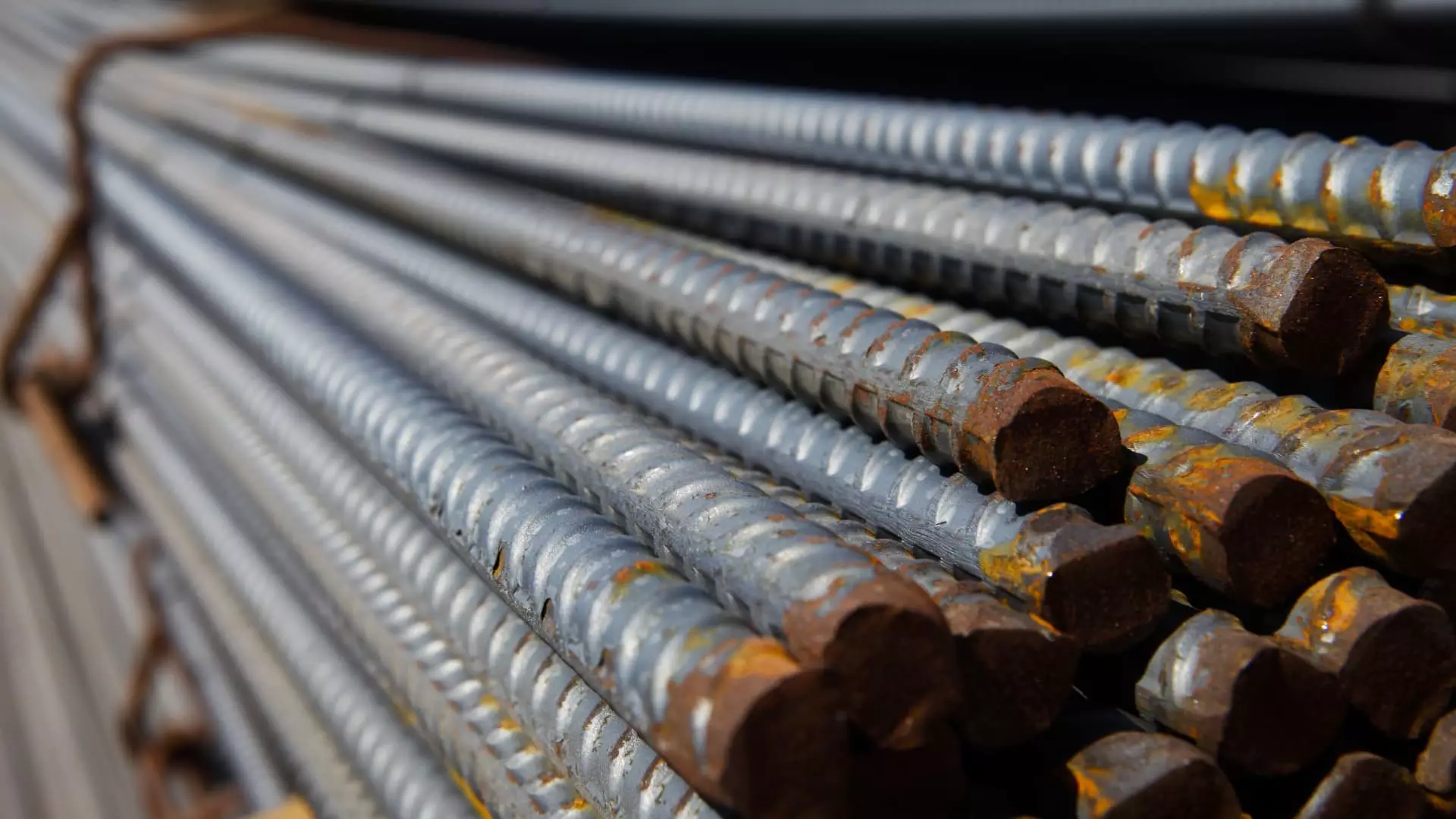In a significant shift within the U.S. industrial landscape, the implementation of tariffs on steel imports has reignited discussions about the health and sustainability of the domestic steel industry. Spearheaded by President Donald Trump, the recent trade measures introduced a 25% tariff on imports from both Canada and Mexico, alongside a 10% tariff on Chinese steel. While there is widespread speculation that these tariffs might bolster domestic steel production, industry experts and Wall Street analysts express caution about potential long-term repercussions that could destabilize these optimistic projections.
Initial reactions from the stock market underscored the volatility that often accompanies such sweeping trade decisions. The Dow Jones Industrial Average exhibited a fluctuating trend, bemused by the announcement and subsequent negotiations around these tariffs. Early stock market declines of around 600 points were tempered by tentative gains in steel-related shares. Companies like Nucor and U.S. Steel experienced marginal increases in their stock prices, while others, such as Steel Dynamics, faced minor setbacks. This mixed response indicates a broader uncertainty about how tariffs will reshape the competitive landscape.
Despite the immediate stock fluctuations, industry leaders have hailed the tariffs as a potential reprieve from years of struggling against underpriced foreign steel, which often enters the U.S. market through practices deemed as “dumping.” This illegitimate pricing strategy allows foreign manufacturers to sell their products below domestic production costs, putting American steelmakers at a disadvantage.
The phenomenon of dumping is a critical element in the conversation surrounding U.S. steel. Nucor CEO Leon Topalian articulated the industry’s frustrations, citing illegal dumping, subsidization, and currency manipulation as factors that create an unbalanced playing field. This crucial context transforms the tariffs from a mere economic statistic into a lifeline for domestic producers, who hope that reduced competition will allow them to ramp up production and stabilize prices.
Canada and Mexico, notably the top two sources of steel imports into the U.S., are pivotal players in this complex trade narrative. While these countries initially faced significant tariffs under Trump’s administration, a subsequent trade agreement alleviated some of these burdens. Nevertheless, the renewed emphasis on tariffs suggests an ongoing battle to reclaim market share and protect U.S. manufacturing jobs.
Morgan Stanley’s assessment indicates that the protectionist measures could pave the way for price recovery. Analysts project an uptick in steel prices, beginning in 2024 and expected to build momentum through 2026. However, this price optimism is tempered by projections of muted demand growth—just 1.6%—which raises critical questions about the sustainability of any price increases. This projection is particularly alarming in a landscape where reduced demand for steel, particularly from the automotive sector, could have a chilling effect on the market.
Compounding this complexity is the recent downgrade of U.S. Steel’s stock outlook, with analysts indicating a diminished potential for significant upward movement unless transformative changes occur, such as acquisition. The blocked acquisition attempt by Japan’s Nippon Steel illustrates the geopolitical and regulatory challenges facing companies in this deregulated atmosphere.
Long-Term Risks: A Cautionary Outlook
Despite the temporary boost provided by tariffs, investment banks like Bank of America Securities caution against over-reliance on this protective framework. The looming concern regarding a potential reduction in auto production—accounting for roughly 25% of domestic steel demand—highlights the precarious balance that steel companies must navigate.
Furthermore, as other firms look to capitalize on market conditions, upward pressure on prices combined with a potential influx of new capacity could create a ripple effect, leading to a saturation of the market. Analysts from UBS echo these sentiments, asserting that while prices may initially rise due to trade disruptions, ongoing challenges such as low demand and capacity oversupply could stifle long-term profitability.
The landscape for U.S. steelmakers stands at a crossroads, benefiting from tariffs but shadowed by inherent risks tied to market demand and geopolitical factors. As these dynamics unfold, industry stakeholders must remain vigilant and proactive in adapting to an ever-changing economic environment. Ultimately, the realization of gains from tariffs will depend heavily on the ability of domestic producers to innovate and respond to both domestic and international market challenges while fostering a sustainable growth path for the American steel industry.

